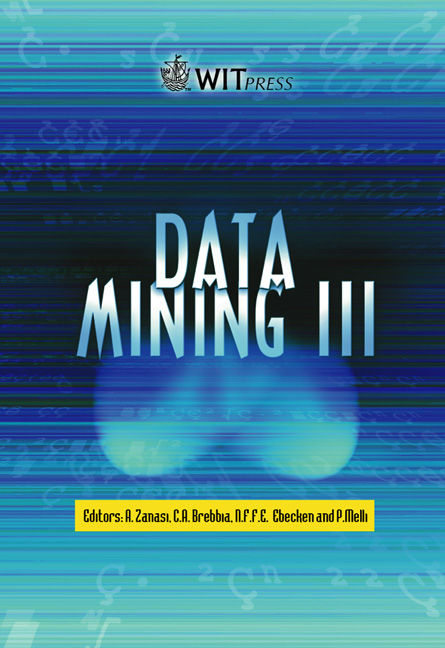Detecting Sequential Patterns For Cross-selling Fast Moving Consumer Goods
Price
Free (open access)
Volume
28
Pages
10
Page Range
521 - 530
Published
2002
Size
675 kb
Paper DOI
10.2495/DATA020501
Copyright
WIT Press
Author(s)
G Verstraeten, D Van den Poel, A Prinzie & P Van Kenhove
Abstract
In the marketing domain, sequential patterns have been usefully deployed for predicting various aspects of customer purchase behavior. However, to date, the applications of the technique have mainly focused on improving algorithms for detecting sequentially related events, whereas the implications of the sequences, and their incorporation into a global structure of consecutive sequences have been treated to a lesser extent. In this paper, such a structure, that we will refer to as sequential architecture, will be empirically investigated for a specific case in a fast moving consumer goods setting. Hence, the goal of this paper was to introduce a new concept that might prove to be a relevant tool for marketing decision making rather than offering a sound solution within a clearly demarcated problem definition.
As opposed to the traditional sequence-analysis approaches, in this study, an array of binary logit analyses was applied for detecting significant sequences among category purchases. We use the output of the logit analyses to define the category that is most significantly influenced per newly purchased categories, and we select these links for constructing the applicable sequential architecture. Finally, we provide empirical evidence that the methodology suggested is able to double the performance of predicting purchases in categories that were not purchased previously by the consumer, compared to a random model. In summary, we have shown that (i) binary logit analysis provides a feasible alternative for detecting and selecting highly significant sequential relationships, (ii) a sequential architecture can be successfully compiled through the methodology offered in this paper, and (iii) the provided sequential architecture can be a useful tool in understanding and predicting customer behavior. Future applications possibly lie ahead in the field of inter-category management, shelf-space allocation, store-layout decisions, retailer promotions, customer profiling and individual customer predictions.
Keywords





